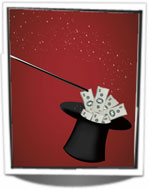Customers, clients or prospects give you permission to email them because they want to get information from you. Let's call them subscribers.
You could craft the greatest, most-impressive email campaign, but it means nothing if you don't have anyone to send it to. So before you do anything, you must have customers, clients, members or prospects who have given you permission to email them because they want to get information from you.
You Need Permission
You should only send bulk emails to people who are expecting it from you and specifically you. It's really that simple. There are stiff legal penalties for breaking the law when you cross certain lines. But it's also possible to experience severe consequences when you comply with the law, but don't use best practices. Reputable email marketing companies will hold you to these best practices so that they can ensure delivery of your email newsletters and those of all their other clients.
Spam
The sending of unsolicited email in identical or near identical form to a list or group of people is called spam. The
CAN-SPAM act is very clear in that you are not to harvest email addresses and send bulk emails to people who don't want them. It goes further in regulating the types of commercial messages you can send so as to not be deceptive or misleading. Buying email lists, borrowing email lists, and making lists from people with whom you don't have a relationship puts your company at tremendous risk.
 We're not attorneys, so don't take this as your legal advice. We can just tell you some situations that are red flags for us:
We're not attorneys, so don't take this as your legal advice. We can just tell you some situations that are red flags for us:
Don't use purchased email lists
Don't use third party email lists
Don't trick people into being on your list
If you have to ask "what if?", then you probably shouldn't do it. Remember that the spam tag isn't decided by you. It's the perception of the recipient and the server administrators that counts.
How to Properly Build Your Permission-Based List
It's not hard to build permission-based lists. It only takes common sense and a minor dedication to your methods. The good news is that technology can automate the process. Paper and pen work, too. And when the two worlds meet, you have even more power!
Your Lists Should Be at Least "Opt-In"
This means that a person has explicitly consented or given permission to be sent bulk email from the sender. All your email lists should be at least opt-in.
And Probably "Double Opt-In" (or Confirmed Opt-In)
In this preferred method of obtaining permission, the person signs up for email contact via a form, check box, sign up box, etc. A second step is added in where the person responds to a verification email before any email marketing is sent. This is the safest way to build your email lists.
And Give People the Option to "Opt-Out" (or Unsubscribe)
The action a person takes when they no longer want to receive email from a company. It requires a web-based mechanism by which people can ask to be removed reliably from an email list. This request must be honored within ten days. Your email service provider should provide this for you automatically. Not giving people this option is asking for big trouble.
Use Those Sign Up Boxes!
A good email marketing company can provide you with one of these - basically HTML code that you copy and paste into your website, social network page or anywhere else you're on the net. People see a box that they can easily use to sign up for your newsletters. Because a verification email is sent, your list is double opt-in and considered to be the best kind of list.
Place Buttons or Links to Your Sign Up Box
If you often visit forums, participate in
business social networking or are active in places where you can't place the code for your box, put a link to it whenever you can.
Don't Let Your List Go Stale
A good rule of thumb is six months. Even if you built your list the correct way, a person might forget that they have subscribed to your newsletter. They might hit that spam button.
Frequent Trade Shows
You can find lots of people who have similar interests all in one place. Shake hands, say hello, and kindly ask for permission to send your new contact a newsletter. If you didn't get written permission to add them to your list, make sure that you use the confirmed opt-in method when you manually add them to your lists. Every new contact added this way gets an email with a link in it that they must click on to activate their subscription. A good rule of thumb is that if you get a business card at a trade show, immediately email them and ask them to confirm that they want to be on your bulk email list.
Don't Buy Lists
Never. Don't do it. There are not thousands of eager people who volunteer their names and contact info just waiting for strangers to buy their email address and send them spam.